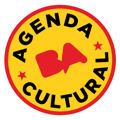Publicaciones

Luk Van den Dries immerses himself in the oeuvre of Jan Fabre – in the fields of theatre, dance, opera, visual art – and discovers the essence of the work of the outstanding Belgian artist: the body is not a fixed form but one in constant movement and transformation. What happens with corporeality in his stage productions? What are its features? What is the creative process like in Fabre’s universe? How is his extraordinary imagination shaped into theatrical forms? These are some of the questions covered by the author. Van den Dries studied German philology at the University of Brussels and is the dramaturg of two of Fabre’s productions: Tannhauser and Requiem fur eine Metamorphose. He is Professor of Theatre Studies at the University of Antwerp (Belgium), was the editor of the theatre magazine Etcetera, worked at the Flemish-Dutch Theaterfestival and was the president of the Flemish Arts Council. His book publications include Performance, transformance, informance. New Concepts in Theatre; Body Check; Omtrent de opvoering. Heiner Muller en drie decennia theater in Vlaanderen; and Corpus Jan Fabre, which has been translated into seven languages. Together with Fabre, he founded Aisthesis, a research center on the representation of the body in today’s theatre.
The book release will be held on October 6 at 5 PM, at Punto de Encuentro - Salón Real, in an open and free event where Jan Fabre will talk about his oeuvre.
Preface Corpus Jan Fabre
Fabre’s work has come to be exemplary in contemporary theatre, not least thanks to his remarkable consistency and continuity. It is ‘radical’ theatre, and cuts to the core.
There are some who either misinterpret the radical questions he poses of mankind as fashionable provocation or choose this stance as a way to intentionally evade them.
And those deaf to the echo of greater traditions – early rituals, antique theatre, tragedies, dramas and farces from the Middle Ages, the Renaissance and the Baroque periods – which link Fabre’s work to the depths of theatre history, are beyond help. Their mouths will only ever taste filth in their thirst for purity and form which in theatre can only stem from the reality of the mortal, impure, animal-like, vulnerable body.
Such misinterpretation is only all too common and similarly afflicted Rimbaud and Baudelaire, as well as many other performance artists who long for the catharsis from taking risks, surpassing limits, and the shock of real or imagined pain.
The scandal instigated in certain Parisian circles by The Crying Body, a prelude to History of Tears, is in fact a credit to it. Critics who limit themselves to listing off the actual or suggested blasphemous, obscene or provocative movements of a production are acting as censors who blind themselves to the content, form and energy of this theatre of the body. Fabre’s work is essentially tragic – and modern tragedy borders of course on the grotesque, on satire, on the sinister. But whereas in traditional drama it used to matter what happened between bodies, in post-dramatic theater it matters to the body itself. Fabre simply lets us feel and think the body as metaphysics.
He himself conceives of the human body as the setting of a tragic conflict. The static nature of the skeleton, calcium and bones is in constant battle with the flesh, the soft and fluid, the juices. Freud spoke of a death force and a life force. In the end death wins, the Grim Reaper.
But until then we will wage this war, and Fabre’s theater continues to illustrate this with strong, deep, corporeal images.
Consciousness necessarily regards the body as obscene, ob-scaena, beyond that which is open to view. And perhaps the body should and must remain out of sight in daily life.
But theater is there to write the exception that makes the rule a problem. For Heiner Müller the purpose of art was to render reality impossible, for example in suppressing or renouncing it. Fabre started in the performance arts, and his theater still retains this element of performance. His early works were characterised even more than his more recent works by the vehement rejection of tangible content. The spectator had to suffice with the perception of the form as a form. But even this is also traditionally known as beauty, a theme Fabre has never relinquished: beauty that shines even more when threatened by the prick of death or transitoriness; beauty of a space or a position , which in overextending itself turns into a mystical and aggressive teaching and manages to turn from there back into a beauty which is free (of all expectations). Compared to the ‘concrete theater’ format and the aggression of his first works, metaphysical, spiritual motifs later moved to the foreground. With the real risk of course that the spiritual quest of the artist, which attacks the grotesqueness of the ‘official’ Christian abnegation of the flesh, would be denounced as blasphemous. But today, with critics everywhere crying in unison with conservative publics for theater which is ‘tidier’, ‘more tasteful’, ‘more beautiful’ and easier to digest, the presence of this literally exorbitant theater is truly a gift.
This book is also a gift – for connaisseurs of Fabre’s work as well for those who wish to get to know it. It provides the eye with a sharp lens to dissect the density and richness of this theater as if with an analytical scalpel (in the introductory essay); a microscope to witness the details of the production process (the rehearsal diary); the mirror of the testimonial photos which evoke an image of the productions; and a crystal ball, the fundamental interview full of content and substance, which peeks inside the mind of Jan Fabre as artist, inventor and seeker. It promises to open many eyes and ears to a singular artistic work which demonstrates the potential of modern-day theater.
Hans-Thies Lehmann
(Translation : Jodi Holtham)



